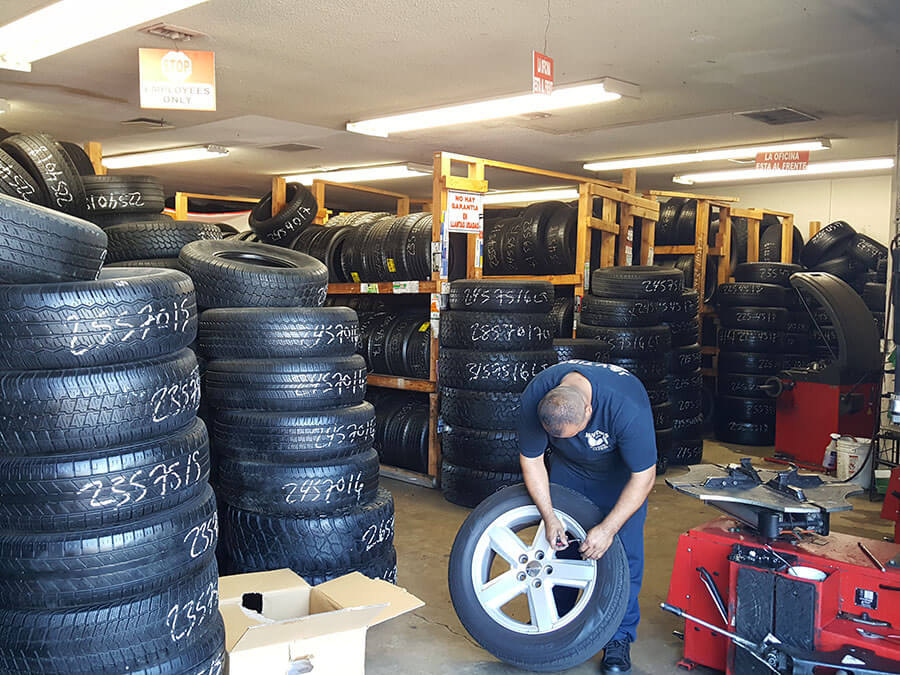Wide Option of Tires Morris IL: Discover the Perfect Fit for Your Car
Wide Option of Tires Morris IL: Discover the Perfect Fit for Your Car
Blog Article
Tire Solution: The Effect of Climate Condition
When it comes to making certain optimum performance and safety when traveling, understanding the effect of weather condition conditions on tire service is crucial. From scorching heat to icy roads, each weather condition component can dramatically affect tire capability and total driving experience. By diving into the results of differing climate condition on tires, drivers can gain beneficial understandings that may enhance their vehicle's efficiency and longevity. In this conversation, we will certainly discover the elaborate connection in between weather problems and tire service, dropping light on the relevance of weather-specific tire maintenance practices and considerations.
Warmth and Tire Performance
When subjected to heats, tires experience adjustments in efficiency that can dramatically impact car safety and handling. The warmth generated from prolonged driving or hot weather conditions triggers the tire rubber to soften, causing decreased step life and raised wear. As the rubber ends up being softer, the tire's hold when driving lessens, impacting stopping ranges and total grip. In severe situations, too much warm can even trigger tire blowouts, posturing an extreme security risk to the automobile and its occupants.
Furthermore, high temperature levels can increase the procedure of tire aging, triggering the rubber to weaken more promptly. To mitigate the impacts of heat on tire efficiency, chauffeurs must on a regular basis examine their tire stress, turn tires to guarantee even put on, and inspect for any kind of indications of damages.
Winter Impacts
Cold climate problems can have a substantial effect on tire efficiency and safety. As temperatures drop, tire rubber can set, causing decreased grip on icy or snow-covered roads. In winter, tires may additionally lose atmospheric pressure much more quickly, which can impact managing and gas efficiency. In addition, chilly temperature levels can trigger tire sidewalls to stiffen, raising the risk of damage from craters or other road dangers.
To reduce the effects of winter on tires, it is essential to frequently examine tire pressure and inflate them to the producer's suggested degrees. Making use of winter months or all-season tires created for winter conditions can also improve traction and grasp on icy or snowy roads - morris tire and alignment. Appropriate tire upkeep, including routine inspections for wear and damages, becomes much more important during cooler months to ensure optimum performance and security
Rainy Conditions Influence
Throughout wet conditions, tire efficiency and safety and security can be dramatically influenced by the damp roadway surfaces and lowered exposure. The step pattern of tires plays a vital role in keeping traction on wet roadways. Tires with worn-out footsteps are more prone to hydroplaning, where a layer of water develops in between the roadway and the tire surface area, causing loss of grip. To fight this, vehicle drivers must frequently check their tires for adequate step depth and take into consideration spending in tires especially designed for wet conditions.

Snow and Tire Safety
When driving in snowy problems, having the best tires can make a substantial difference in safety and security and efficiency. Winter tires are made with unique rubber substances and tread patterns to give far better grip on snow and ice compared to all-season tires.
In addition hop over to here to utilizing wintertime tires, it is vital to guarantee they are correctly blown up. Cold weather can create tire stress to drop, affecting traction and handling (morris tire and alignment). Consistently examining and keeping the correct tire stress is vital for optimum performance in snowy problems

Weather-Related Tire Maintenance
When confronted with numerous climate condition, appropriate tire upkeep comes to be a vital facet of vehicle safety and security and performance. Weather-related tire upkeep encompasses a series of techniques targeted at making certain optimum tire feature and durability in different weather circumstances. One essential facet of weather-related tire maintenance is tire stress guideline. Changing temperature levels can create tire pressure to differ, influencing traction and gas effectiveness. On a regular basis checking and readjusting tire stress according to producer suggestions is crucial for safe driving in changing weather. Additionally, tire tread depth plays a considerable role in handling different weather condition aspects. Tires with ample step deepness supply far better hold on wet or icy roadways, decreasing the danger of hydroplaning Check Out Your URL or skidding. When step wear reaches a specific deepness is essential for preserving traction and security in unfavorable weather, evaluating tire step frequently and changing tires. By focusing on weather-related tire upkeep, drivers can enhance security, boost automobile efficiency, and extend the life expectancy of their tires.
Final Thought
To conclude, climate conditions have a significant effect on tire efficiency and safety. From warmth impacting tire pressure and put on to winter reducing grip, it is important to think about the weather when preserving and utilizing tires. Stormy problems can lower hold and cause hydroplaning, while snow can raise the risk of crashes if tires are not correctly equipped. Weather-related tire upkeep is vital in ensuring optimum performance and security when traveling.
In this conversation, we will check out the complex partnership between weather conditions and tire solution, dropping light on the value of weather-specific tire maintenance techniques and considerations.

Report this page